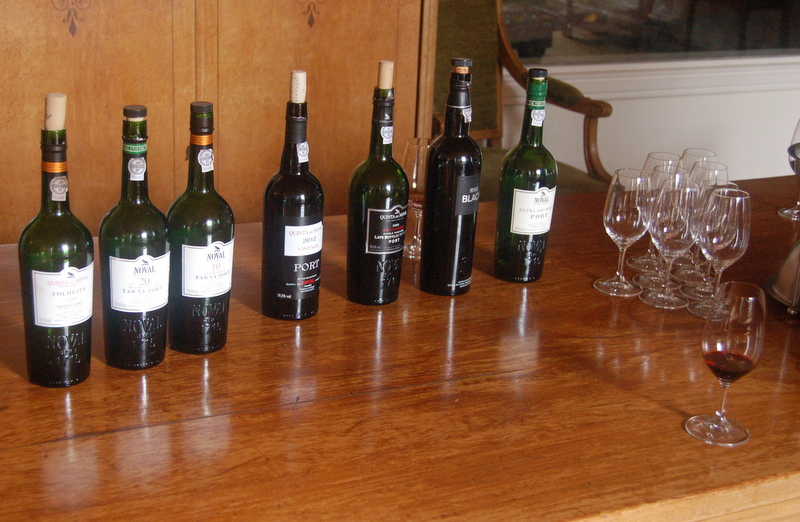Port wine has been the number one Portuguese export for centuries. Naturally, we wanted to visit the heart of the production area, and we also wanted to check out the burgeoning wine scene.
Villa Nova de Gaia
The coastal city of Porto was the obvious first stop, but technically port lives in the adjacent city of Vila Nova de Gaia since it allowed port producers to evade the taxes of the Bishop of Porto way back when. The riverfront and hillsides are filled with warehouses for aging port and welcoming hoards of tourists. After a quick impersonal tour at the Ferreira port vaults, we ended up at the small storefront of Quinta do Noval.
In the 1980s most of the storage for Quinta do Noval went down in flames. Instead of rebuilding they decided to move everything 100KM East into the Douro Valley where their grapes grow and the port is produced. The storefront they decided to open has a few tables, some helpful people, and a great 2005 Late Bottle Vintage of Port among others. When we asked if we could visit the Quinta, it didn’t take long before we had the phone number of Sonia, the tour-giver of the theoretically closed-to-the-public historic Douro estate.
Quinta do Noval
It took us a couple phone calls and some embarrassingly bad Portuguese to reach Sonia and make a reservation. But after our recent experience in Alentejo,we were used to the Portuguese standard of jumping through hoops to visit wineries. It paid off. We received an extensive hour long visit in the vineyards, including their resilient pre-phyloxera patch which produces some of the most expensive wine in the world. The views over the estate and area valley were amazing, the tour informative, and the tasting comprehensive. Of the many ports we tasted (see photo), our favorite was the 20 year tawny. The 2000 Colheita was a close second. The winery also produces table wines, but the focus of this tour was the port. When we expressed interest in wine, Sonia immediately rattled off a list of places we should visit, but she called white wine producer, Quinta da Fiasca, for us. She schedules a 10AM tour with the one of the owners for the next morning because he happens to have a Columbian importer in town he’s already giving a tour to.
Quinta da Faisca
The mountaintops and high plateaus of the Douro are reserved for white grapes, keeping them from the hottest of the summer heat. The land around Quinta da Faisca is at flat and as cold as it gets (for the Douro) requiring no terracing, but they still don’t use machines to harvest. Gonçalo and the other tour-goer greet us on arrival, and he launches into a thorough dual-language tour including the standard foot-stomping vats (yes, they still do this) as well as interesting details about being a smaller wine producer in the region and having to compete with the big name brands.
The tour ends in the giant modern tasting room, but since there are only 4 of us, we move to Gonçalo’s cozy (heated) home for the actual tasting where we enjoy fabulous white wines, a couple standard reds, and the truly sublime 40 year-old moscatel. On leaving, Gonçalo has a few more suggestions for where to go next. Who needs a guide book?
Next…
Throughout our tastings, tour guides kept mentioning the recent “Wine Spectator” results ranking 2 Douro wines and a port in the top 10 wines of the year. Optimism abounds, and plans are being made to build or expand tasting rooms which should make visiting easier going forward. A couple wineries do offer drop-in visits for tastings, but in general they were impersonal experiences with lower-quality wines. Hopefully, as the region expands, they can keep a balance of personal experiences that cater to a larger population of visitors. The wine deserves it.*
* Quinta da Pacheca – We have high hopes for this winery who supplied a tasting of some of their finest wines and ports, opened promptly as scheduled, and are expanding their tasting room next year after a stellar tourism summer.

Leave a Reply